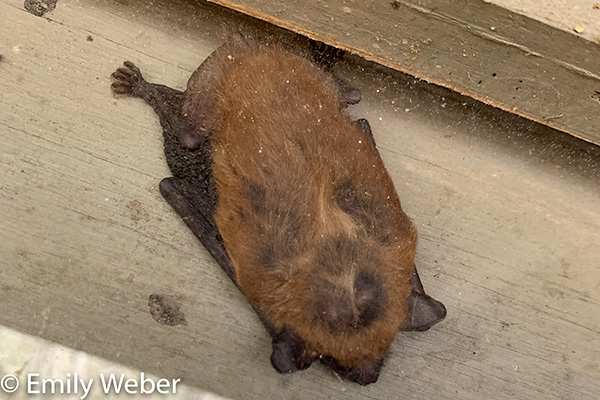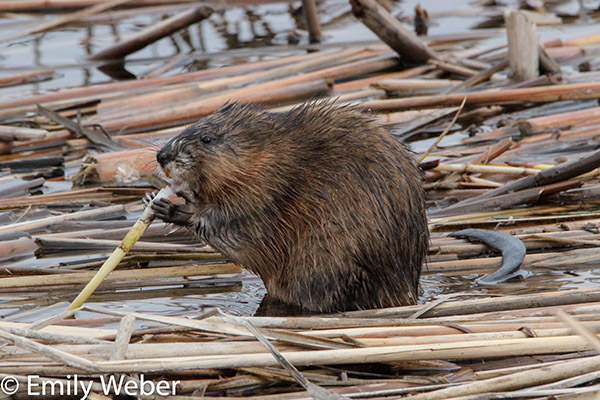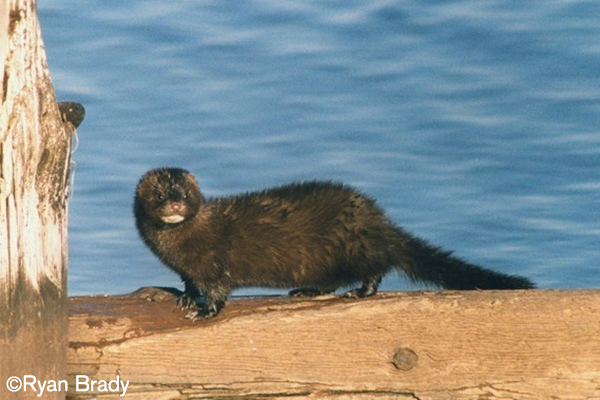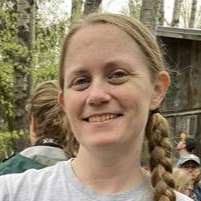Mammals

Bats
Four of Wisconsin's cave-roosting bats (big brown bat [Eptesicus fuscus], little brown bat [Myotis lucifugus], northern long-eared bat [Myotis septentrionalis] and eastern pipistrelle [Perimyotis subflavus]) are listed as threatened in the State. All four of these have been recorded in the AOC study area, as have three of the other Wisconsin bats (silver-haired bat [Lasionycteris noctivagans], eastern red bat [Lasiurus borealis] and hoary bat [Lasiurus cinereus], known as “tree bats” because of their use of trees for roosting.
Populations of bats in Wisconsin and elsewhere in eastern North America are declining rapidly, partly due to a white-nose syndrome caused by the fungus Psuedogymnoascus destructans. Other factors that have affected declines in tree-dwelling bats include mortality at wind turbines (Cryan and Barclay 2009) and habitat loss or degradation (Campbell et al. 1996, Crampton et al. 1998), and all bats may be vulnerable to the physiological effects of organic contaminants (Bayat et al. 2014).
Continued declines in Wisconsin bats may have severe ecological and perhaps even economic consequences. Boyles et al. (2011) estimated that insect predation by bats saves the U.S. agricultural industry $22.9 billion/year by preventing crop losses and reducing pest control expenses. A single colony of 150 big brown bats consumes approximately 1.3 million insect pests each year, disrupting the population dynamics of species that otherwise would require expensive and often environmentally harmful control measures.
UW-Green Bay students Jeremiah Shrovnal and Jessica Kempke conducted acoustic bat surveys in the coastal zone of Green Bay during 2013 and 2016. Their results help set the stage for our assessment and recommendations for bat conservation in the LGBFR AOC and show that the coastal zone of lower Green Bay is rich in bat activity, with evidence that five and possibly a significant sixth species (northern long-eared bat) are present as local summer residents as well as migrants.
Conservation or restoration measures to improve the condition of bat populations in the LGBFR AOC include protection of large trees and cavity trees for roosting of forest bats, identification and protection of roosting sites for “cave bats” in the vicinity of the lower bay and Fox River (possibly including artificially constructed “bat houses”), and protection of known feeding areas by restricting construction of wind turbines and other potential hazards. Ongoing assessment of bat populations in the LGBFR AOC will be important to identify specific feeding areas and to follow the status of populations in light of threats by WNS syndrome and perhaps other emerging infectious diseases.

Muskrats
Muskrats (Ondatra zibethicus) are relatively common and are often considered pests because of their damage to shoreline or riparian structures. However, muskrats are a key element of emergent wetland ecosystems in North America and several researchers describe them as important “ecological engineers.” Clark and Kroeker (1993) and Davis and van der Valk (1978) noted that muskrats are the most significant vertebrate consumer of vegetation in many North American wetlands, where their activities influence vegetation decomposition (Connors et al. 2000), the proportion of open water within the wetland (Weller 1981), and availability of nest sites for birds and other animals (e.g., Hickey and Malecki 1997). Construction of muskrat houses and runways also provide important microhabitats for invertebrates (Nelson and Kadlec 1984) and colonization habitat for wetland plants (Weller and Spatcher 1965), thus increasing wetland plant species richness.
Recent surveys have shown that muskrat populations are declining across the U.S., especially in the south. Possible causes include overall wetland loss and isolation, degradation of remaining wetland habitats, changes in hydrodynamics due to climate change or water level controls, or species interactions such as disease or competition from invasive species.
We have no information on the long-term sustainability of muskrat numbers in the LGBFR AOC. During 2017, at least 6 local centers of abundance (separated by at least 1 km) appear to be present. While more local centers of abundance may be present in the lower bay and Fox River, especially with continued control of Phragmites, we have no evidence to suggest that a higher number is an ideal future condition. Instead, we emphasize the critical importance of sustainable local muskrat centers of abundance (separated by at least 1 km), which help ensure persistence through both high and low water cycles.
The most important management action to protect muskrats in the LGBFR AOC simply might be to protect large, contiguous areas of emergent wetland vegetation, coupled with ongoing control of invasive wetland plant species like Phragmites.

Coastal Wetland Mustelids
North American river otter (Lutra canadensis) and American mink (Neovison vison) are semi-aquatic carnivores in the family Mustelidae. Although secretive, both North American river otter and American mink are excellent indicators of LGBFR AOC condition and are valuable as harvested furbearers and “watchable wildlife.”
North American river otters are a flagship species of food-rich coastal areas and lower portions of rivers and estuaries, although they are scarce in polluted waters of heavily settled areas (Feldhamer et al. 2003). According to WDNR otter harvest records (Dhuey et al. 2016, Dhuey and Rossler 2017), eight otters were harvested in Brown County during 2015-2016, and nine were harvested in 2016-2017. Given suitable den sites and an uncontaminated prey base, a sustainable population of 2-3 family groups (adult female and young) certainly seem possible. We observed otters at the Bay Beach Wildlife Sanctuary and at Sensiba State Wildlife Area (just north of the LGBFR AOC on the west shore) during this study period.
American mink, like North American river otter, are harvested by licensed trappers during a limited, regulated season, although unlike otters a special permit is not needed. Geographic information about mink harvest numbers are not available. However, LGBFR AOC field workers observed mink incidentally at UW-Green Bay (multiple times), Point au Sable and the Cat Island Wave Barrier, suggesting that mink populations are well-established in the LGBFR AOC.
The number of coastal wetland mustelids likely can be increased most effectively by improving the availability of shelters and denning sites along the shoreline of Green Bay and contributing tributaries.

Ask an Expert
Meet Erin Giese, Associate Director of the Cofrin Center for Biodiversity. She's President of the Northeastern Wisconsin Bird Alliance, principal investigator for the Great Lakes Coastal Wetland Monitoring Program and administrator of the annual CCB Student Grant Program. If you have questions, she can help!